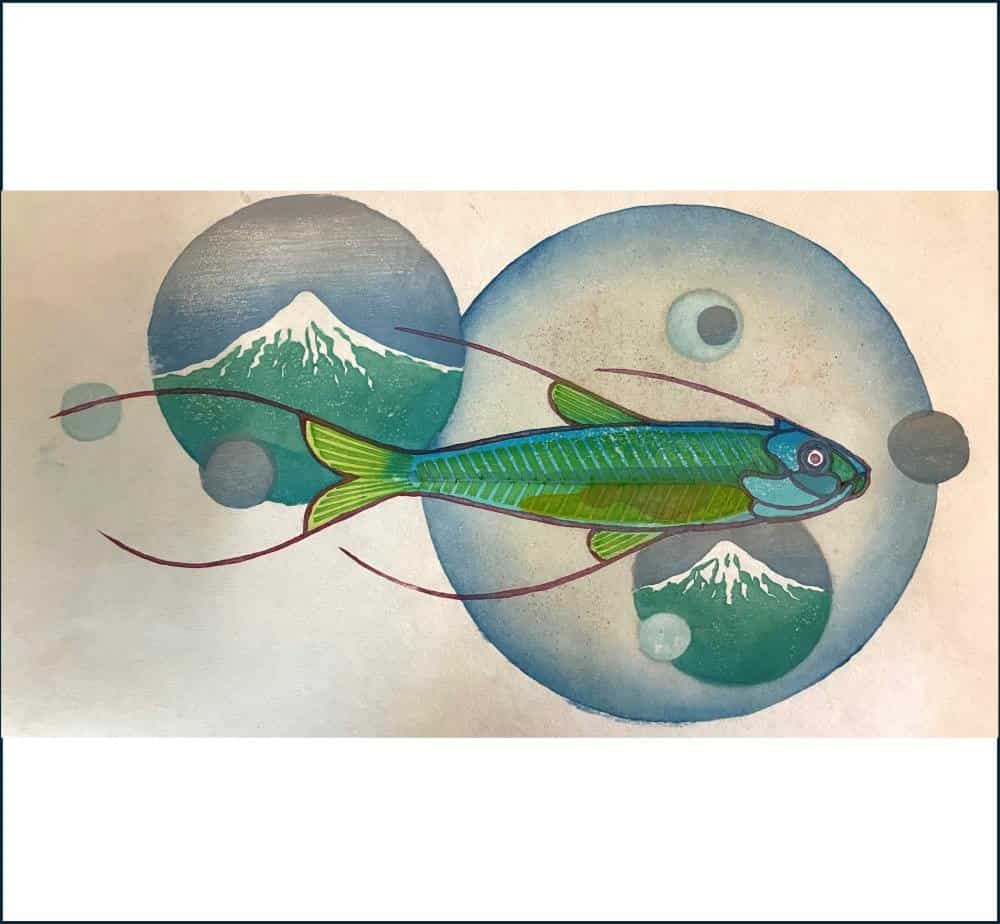
It’s been a year since my residency at MI-Lab- an art residency program in Fujikawaguchiko, Japan. (Now moved to the city of Echizen).
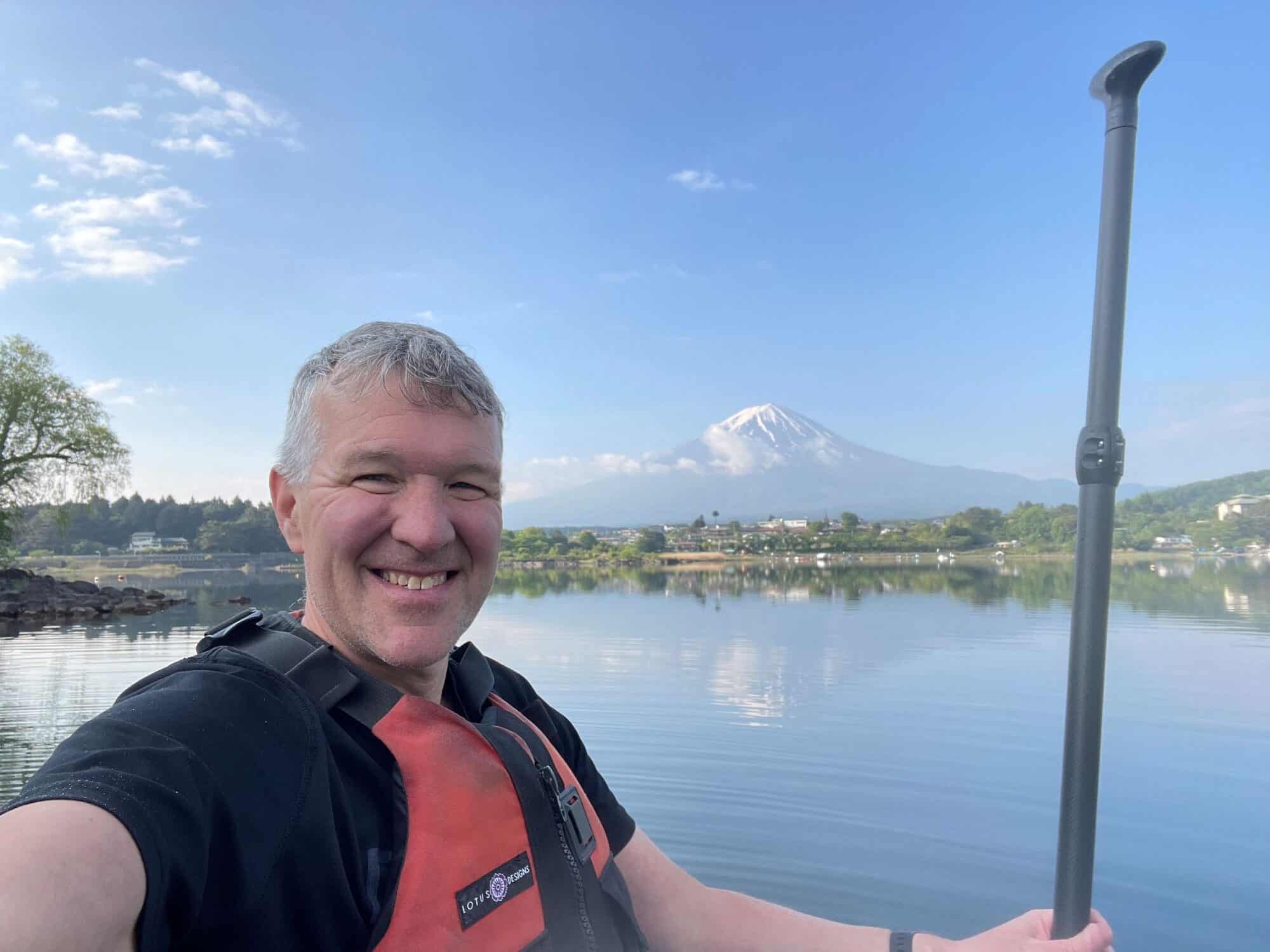
Adapting what I learned to my own home studio has been an interesting process, complicated by my own busy schedule as a professor.
The first Mokuganga (木版画ー Japanese wood-based printmaking) that I made after my time in Japan was a depiction of a Wakasagi smelt. I spent a lot of time paddleboarding on Lake Kawaguchiko, and there were always an array of serious looking, heavily-geared up fisher-folk casting into the depths, chasing these things.
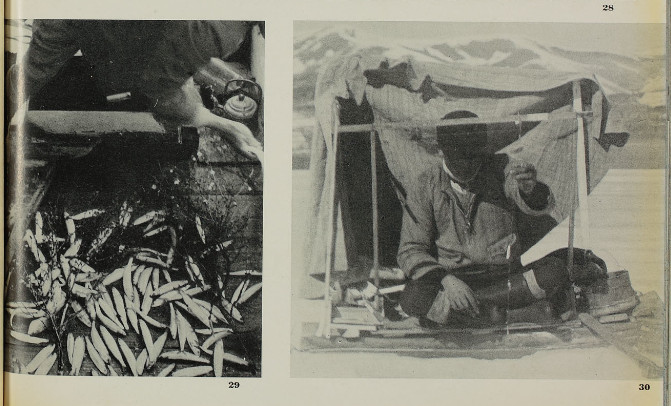
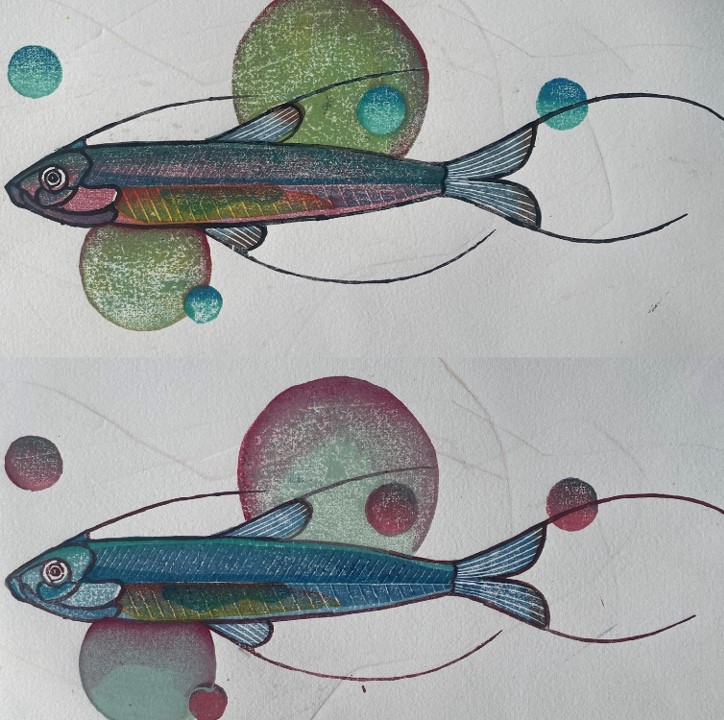
I learned a few things through the process. First- I needed to refine my registration process (my approach to making sure that multiple print overlays line up exactly).
Secondly, I found out that standard U.S. plywood has a LOT of additives that can bleed onto your paper.
My second effort (an Arctic Grayling) worked a bit better.
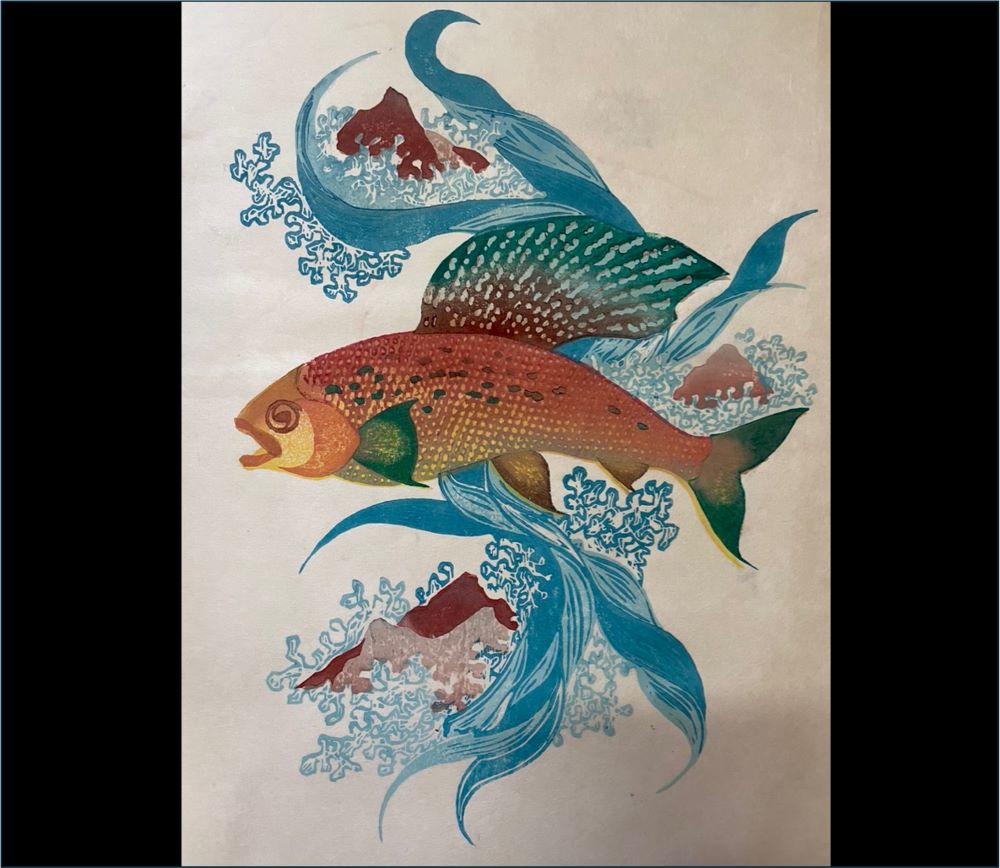
Anyhow, I decided to rework the original smelt print, and add a little evocation of 富士山、(Mount Fuji)… because why not?

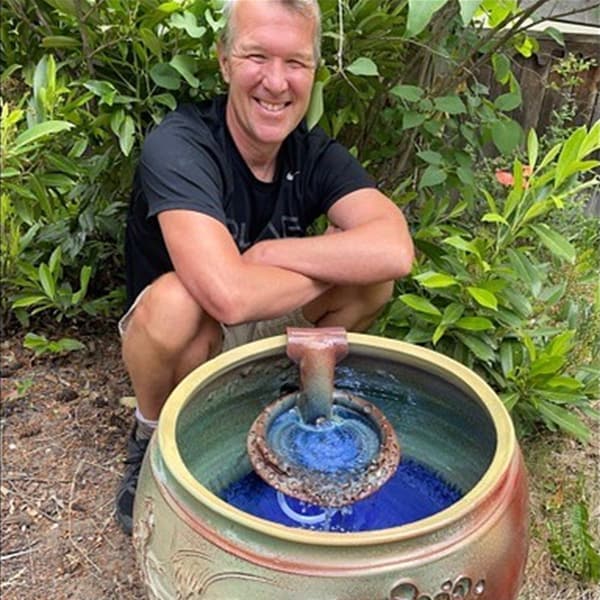
0 Comments